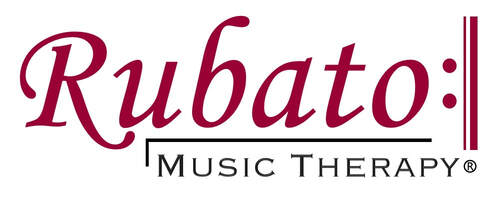Welcome to the Rubato Music Therapy Blog!
A resource for music therapists, music educators, and other professionals who work with individuals with intellectual disabilities, as well as their families and care providers.
|
As music teachers, music therapists, or both: should we hug our student-clients? I remember overhearing a conversation between two teachers when I was in elementary school, about whether or not they should hug students. It stuck in my mind because I was one of those students who frequently hugged my teachers, at least until middle school. Fast forward to becoming a teacher myself. I too have taught a sweet little girl who hugs all of her teachers. I have also been surprised when, after returning a mother's hug at my final concert with her son, my male teenage student asked for a hug as well. When to Hug
A gentle touch on the shoulder or arm can also help to attract the attention of students who are under-responsive to verbal or visual cues or have difficulty attending to a task for long periods of time. As a teacher-therapist, I only initiate a hug with a student-client if they appear to need comforting and if I know that they are comfortable with hugs. The rest of the time, I will respond to their outstretched arms or verbal request for a hug, unless it is contraindicated. When Not to HugIt should go without saying, but if a student-client is uncomfortable with hugs, don't hug them, and if you don't want to be hugged, establish firm boundaries. You can use phrases such as "I'm not comfortable with a hug" or "How about a high five or a fist bump instead?" If your student-client has been physically or sexually abused, any form of touch could trigger associations with that trauma. Be especially mindful of their needs. Two other contraindications are if the student-client has difficulty with boundaries or has expressed inappropriate feelings towards you. These factors can help to identify difficulty with boundaries:
These factors can help to identify inappropriate feelings towards you:
Finally, don't hug a student-client if either one of you is sick! Cultural ConsiderationsIt is important to be aware of cultural differences when it comes to personal space and physical interactions. For example, some of my Hispanic and Middle Eastern clients tend to stand closer to me when we are conversing. However, for clients working on social skills, it is also important to reinforce what is considered appropriate behavior within the current cultural context. The Bottom LineSome people are huggers and others are not. If you, the teacher-therapist, are a hugger, I think it is okay to offer a hug to a student-client who might benefit from it. If you or your student-client is uncomfortable with hugs, or if there are any of the aforementioned contradictions, then don't hug them.
0 Comments
Your comment will be posted after it is approved.
Leave a Reply. |
AuthorKirstie Gallacher-Ang, MT-BC Archives
June 2020
Categories
All
|
Hours |
Call or Text |
|
|
Please contact for current availability.
|
(714) 364-7561
|
